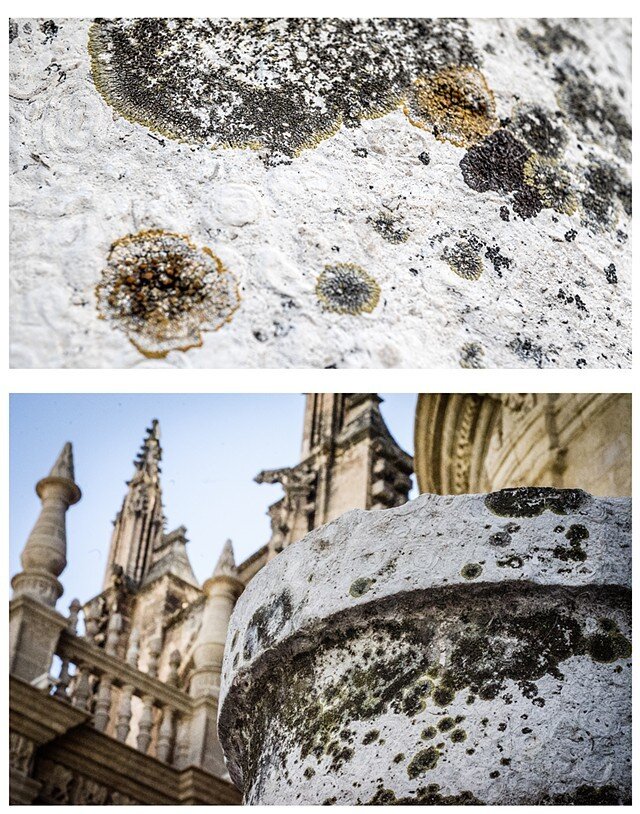AFTER the MINARET
A Symbiotic Transfiguration
Lichen have lived on the minaret for about a thousand years. They were there for the calls from the muezzin, the tolling of the bells, and the noise from the trillions upon trillions of events and changes that followed.
The life and abrading of lichen follow geologic time, so they colonize the minaret as the minaret evolves in artifice, in symmetry, and in surface, in microscopic and massive ways.
The changes and imitations are seen contemporaneously in Seville, and Miami, Kansas City, Chicago, and San Francisco. The lichen, with the queer, composite bodies of fungus and algae, never rest. They transplant to the new, and they grow on the old. They preserve the past—with poetic irony —by reclaiming and renewing, very slowly, for the sake of slowness.
After the Minaret was a speculation on the material and political history of a site imagined from a non-human perspective. I was invited by the University of Seville to create a work for their gallery. For this prompt, I created a site-specific installation made up of screen prints, photographs, and text—all engaging with the history of reproduction, preservation, and change—in form and use—to the Giralda tower in Seville, Spain.
The Giralda was first built as a minaret for an Ottoman mosque in 1184, but soon became a cathedral bell tower as the political structures changed in Spain. While the function of the tower was reimagined based on the religious affiliations of the people in power, its form also went through changes in minute and massive ways, in geological and human time. The formal changes were influenced by the many architects and engineers who created replicas and close copies of the minaret around Europe and the United States (in the US, the structures inspired by the Giralda include the Ferry Building in San Francisco, and the tower of the second Madison Square Garden of New York).
My project After the Minaret theorizes the change to the Giralda in two ways:
1) The project shows a complex connectivity or ‘globalization’, where the particular form of the Giralda gets entangled with a universal or modernist form and loses its specificity, perpetuated by humans. The changes and imitations to the architectural form are seen contemporaneously in Seville, Madrid, Miami, Kansas City, Chicago, and San Francisco.
2) I call the second form of change a symbiotic transfiguration and the agent of this change is non-human lichen, which have lived on the minaret for a thousand years. The lichen are queer with composite bodies of fungus and algae. The abrading of lichen follow geologic time, so they colonize the minaret as the minaret evolves in artifice, in symmetry, and in surface, in microscopic ways. Hence the lichen reclaim and renew the minaret while preserving the past with poetic irony, by embracing change.
After the Minaret is a project that invites the viewer to think about history from a non-human and material perspective. By recruiting lichen as witnesses/historian, the project engenders ideas about cultural exchange, appropriation, and translation as a multidirectional process made up of contact zones of dominance, or/and (more positively) acculturation and progress.





